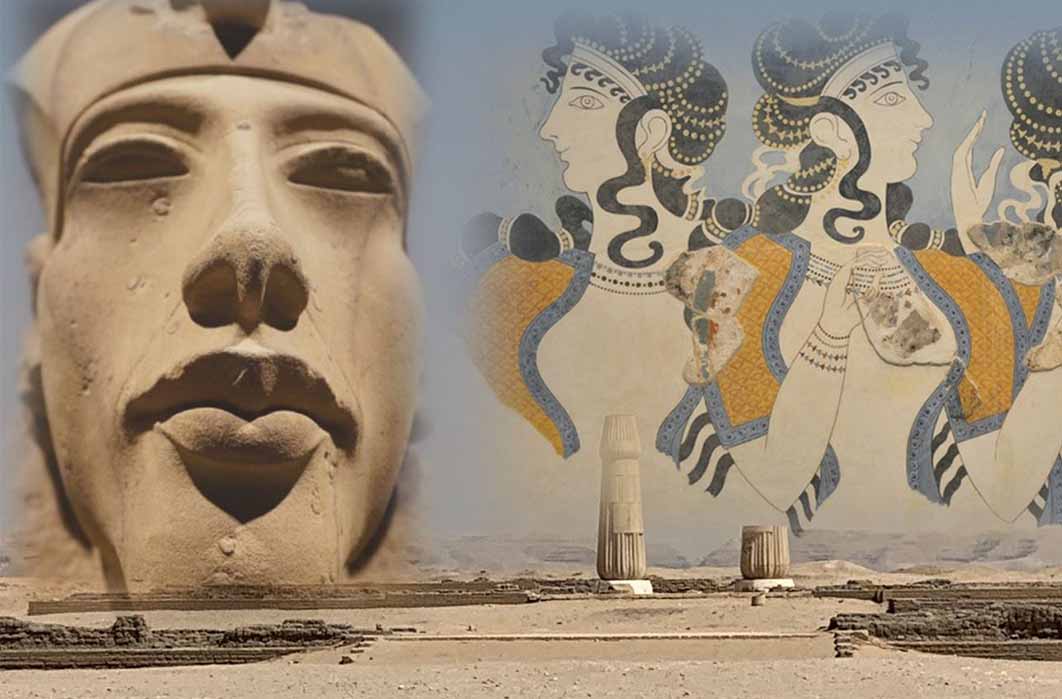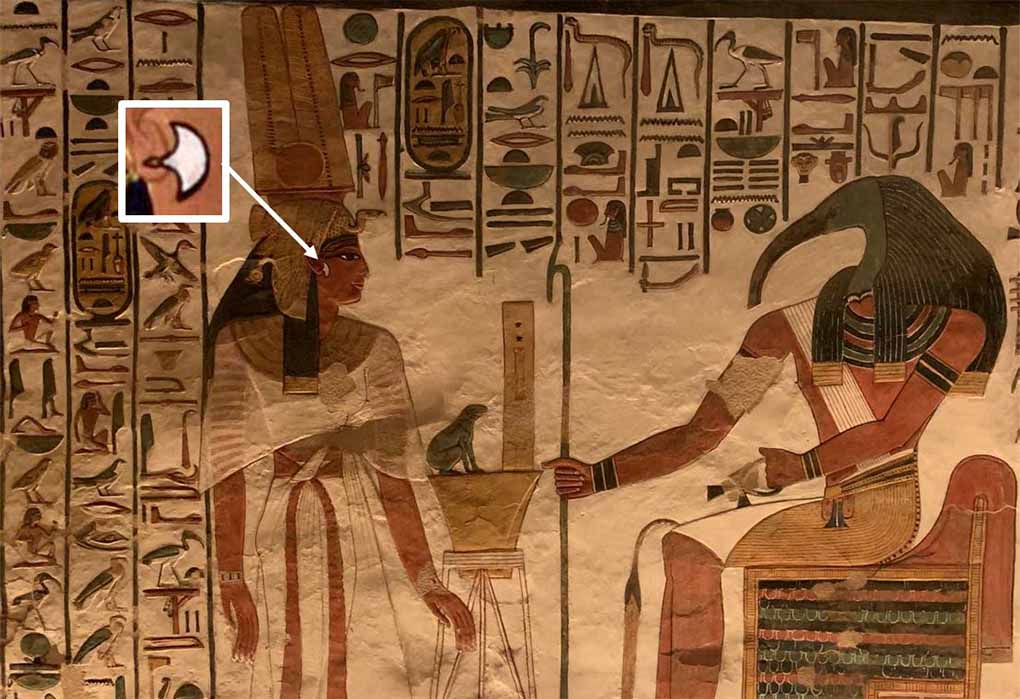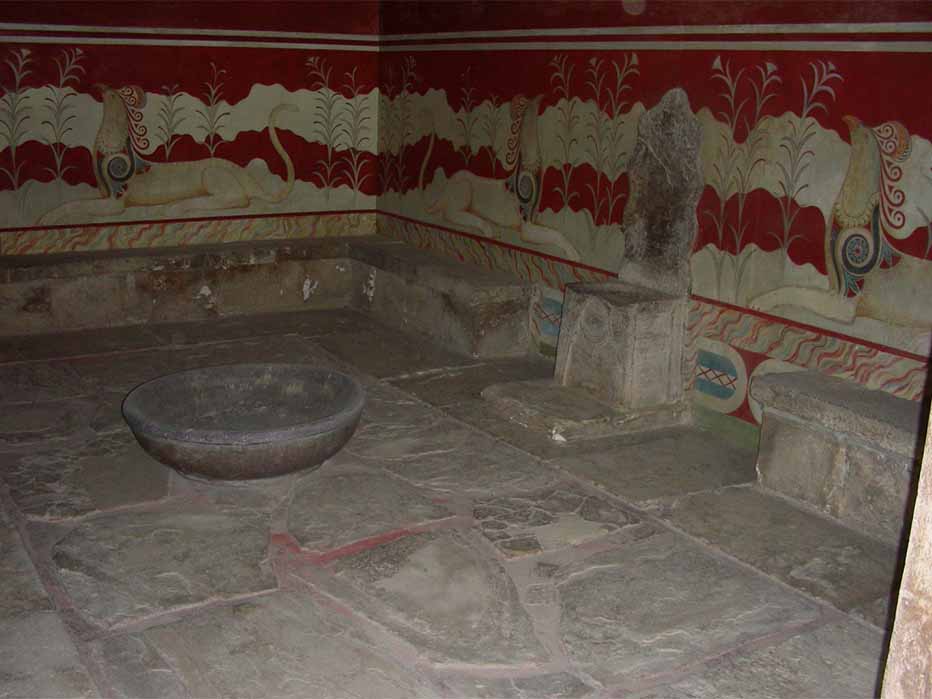
Fair Winds Trade From the Aegean to Egypt’s Amarna
What do Queen Nefertari’s silver earrings, King Tutankhamun’s olive leaf collar, and an exquisite blue glass mixing vessel from Egypt have in common? They were all either a direct product of trade with the Aegean region, or inspired by its cultural aesthetic. In fact, during the Late Bronze Age period (ca. 1550-1200 BC), Egypt enjoyed many facets of Greek influence, including art, decoration, jewelry, pottery, and even foods like olives and olive oil.

Painting of Nefertari wearing her silver, Aegean-influenced earrings, in a scene from her tomb in the Valley of the Queens. (Image: Courtesy Jonathon Perrin)
During the prosperous reigns of Egypt’s ‘Sun Pharaohs’, Amenhotep III (1380-1342 BC) and his rebel son Akhenaten (1354-1337 BC), relations with Crete and Greece were at an all-time high. These mega-rich pharaohs received numerous gifts and trade goods from the Aegean region, were influenced by its natural and flowing artistic style and palace architecture, and may have even imported soldiers as mercenaries in their armies. To the mighty kings who ruled the most powerful country on earth, there was no need to fear these Greeks bearing gifts. They instead painted images of them in their tombs. So who were these generous Aegean peoples, and how did they influence the mighty 18th Dynasty Egypt?
Minoan Me, Minoan You
The earliest Aegean culture with which Egypt had trading relations was the Minoan culture. They were the first advanced civilization in Europe, centered on the Mediterranean island of Crete and neighboring islands from between 3500-1200 BC. While an important maritime culture, with sophisticated art, writing, and architecture, they were forgotten by history, and only re-discovered at the beginning of the 20th century by British archaeologist Sir Arthur Evans. He created their title “Minoan”, named in honor of the mythical King Minos, who owned the Labyrinth.

The Throne room at Knossos with Griffen frescoes (Image: Courtesy Micki Pistorius)
Knossos on Crete is known as Europe’s oldest city, and construction began there as far back as 9,000 years ago. By 2000 BC, the first palaces were being built. These were rebuilt by 1650 BC on a much grander scale, with large central courtyards for public ceremonies and spectacles. Positioned around the court were living quarters, storage rooms, administrative centers, and working quarters for craftsmen. The central administrative area alone covered over three acres! The greater wealth and concentration of authority seen at Knossos during this period was a result of their trade in oil, wine, and wool. Adorning the palace walls were colorful frescos of scenes from everyday life, social interactions, nature, worship, and scenes of processions. Warfare is oddly absent as a motif.

Frescoes of Minoan ladies relaxing in their bell-shaped dresses and bare breasts (Image: Courtesy Micki Pistorius)




